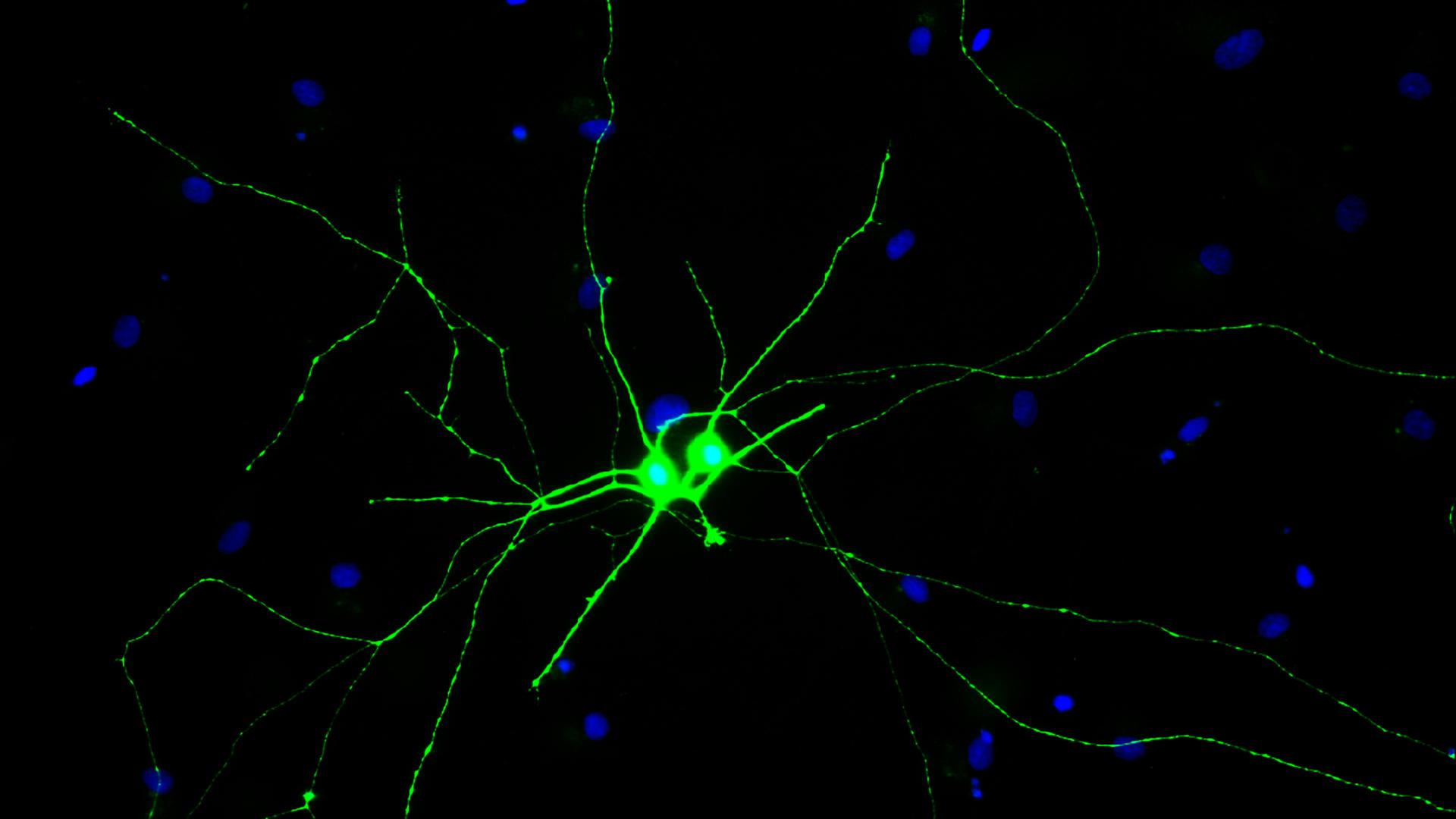Beyond Eye Pressure: A Potential New Path for Treating Glaucoma
Written By: BrightFocus Editorial Staff
Written By: BrightFocus Editorial Staff

A team of National Glaucoma Research (NGR) scientists has linked a genetic mutation with vision damage in glaucoma that points to the possibility of an entirely new treatment method targeting specialized glial cells. The discovery, published in Stem Cell Reports, could work in addition to the standard glaucoma treatment approach of using eye drops to control the rise in fluid pressure that might otherwise damage the optic nerve. In experiments, Jason Meyer, PhD, and Cátia Gomes, PhD, both at Indiana University School of Medicine—discovered that astrocytes with a mutation associated with glaucoma grew dysfunctional in ways that damaged axons and contributed to neurodegeneration. Conversely, introducing healthy astrocytes via adult stem cell techniques rescued some of these neurodegenerative features in cells.
Astrocytes are a type of glial cells—the most prevalent cell type in the central nervous system—and play a supporting role to other tissue. In the eye, they help to nourish and maintain the health of neurons, including retinal ganglion cells (RGCs) that are damaged or destroyed in glaucoma. These cells have the important role of carrying light signals from the eye to the brain; these signals are carried over long “tails” that extend all the way from RGC bodies to the brain. Axons leave the eye in a bundle that’s collectively referred to as the optic nerve.
The chief explanation for glaucoma is a chronic pressure build-up in fluids of the eye that over time damages cells and the eye’s drainage pathways. A remaining riddle, however, is why glaucoma can worsen, even when pressure is well controlled, and why glaucoma is sometimes diagnosed in eyes with normal pressure.
The Meyer lab has long focused on using adult stem cell techniques to replicate eye tissue in the lab. In the short term, they’re creating realistic new models to study glaucoma, and that’s what led to this recent discovery.
“When we turn these donated cells into stem cells, they become a very powerful model for us to study the disease in a dish. We look at the cells in close detail—long before a patient would develop symptoms— and ask, “What’s leading to those early changes?” Dr. Meyer said.
Someday, his team hopes to use cells and surrounding tissues generated this way to replace vision loss from glaucoma. As part of that larger effort, this recent work is the first to use adult stem cells derived from glaucoma patients to examine the specific ways that astrocytes contribute to glaucoma. The results chart new ground, showing that astrocytes may offer a promising target for therapeutic intervention.
As a result, “we’re hopefully getting toward a more holistic approach [to glaucoma],” Dr. Meyer said. As such, the field is moving beyond studies of eye pressure and other factors directly related to RGC death to explore how surrounding cells can undergo changes to make a condition worse.
“We can now start addressing some of these problems, not just by one approach, but by multiple approaches, and hopefully get to therapeutics or cures a lot faster,” he said.
BrightFocus Foundation is a premier global nonprofit funder of research to defeat Alzheimer’s, macular degeneration, and glaucoma. Since its inception more than 50 years ago, BrightFocus and its flagship research programs—Alzheimer’s Disease Research, Macular Degeneration Research, and National Glaucoma Research—has awarded more than $300 million in research grants to scientists around the world, catalyzing thousands of scientific breakthroughs, life-enhancing treatments, and diagnostic tools. We also share the latest research findings, expert information, and resources to empower the millions impacted by these devastating diseases. Learn more at brightfocus.org.
Disclaimer: The information provided here is a public service of BrightFocus Foundation and is not intended to constitute medical advice. Please consult your physician for personalized medical, dietary, and/or exercise advice. Any medications or supplements should only be taken under medical supervision. BrightFocus Foundation does not endorse any medical products or therapies.
Support Groundbreaking Glaucoma Research
Your support helps fund critical research that could prevent vision loss, provide valuable information to the public, and cure this sight-stealing disease.
Donate Today